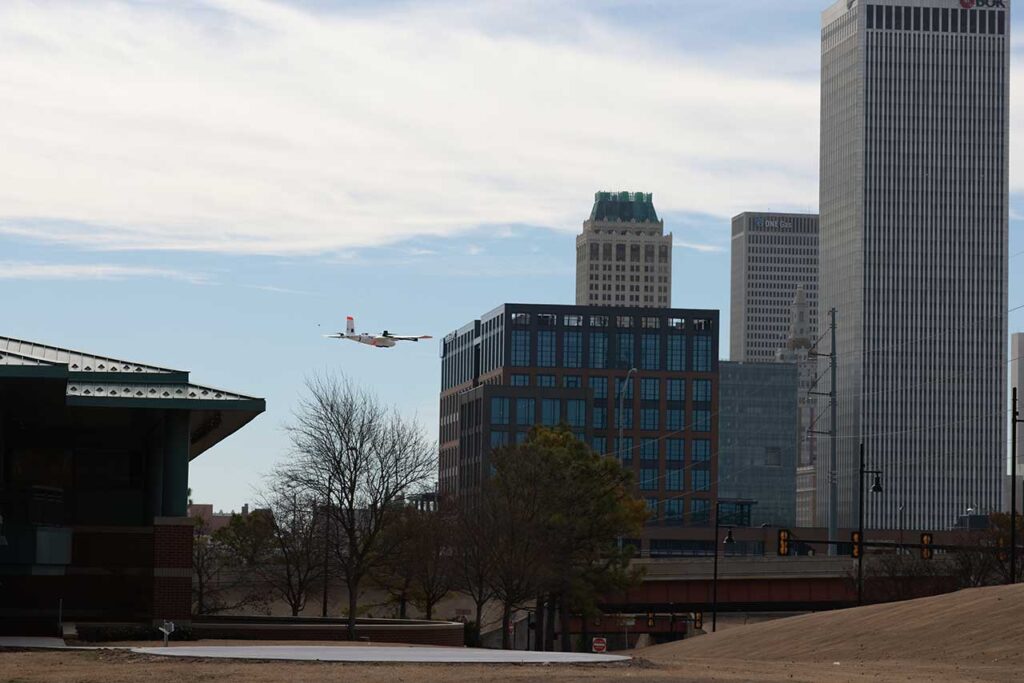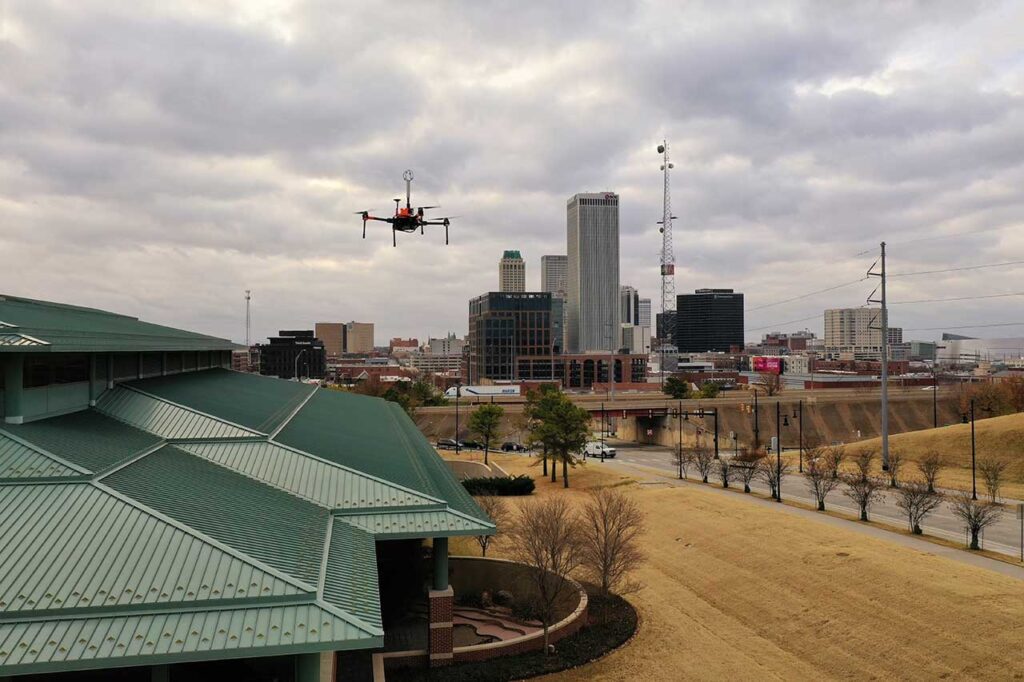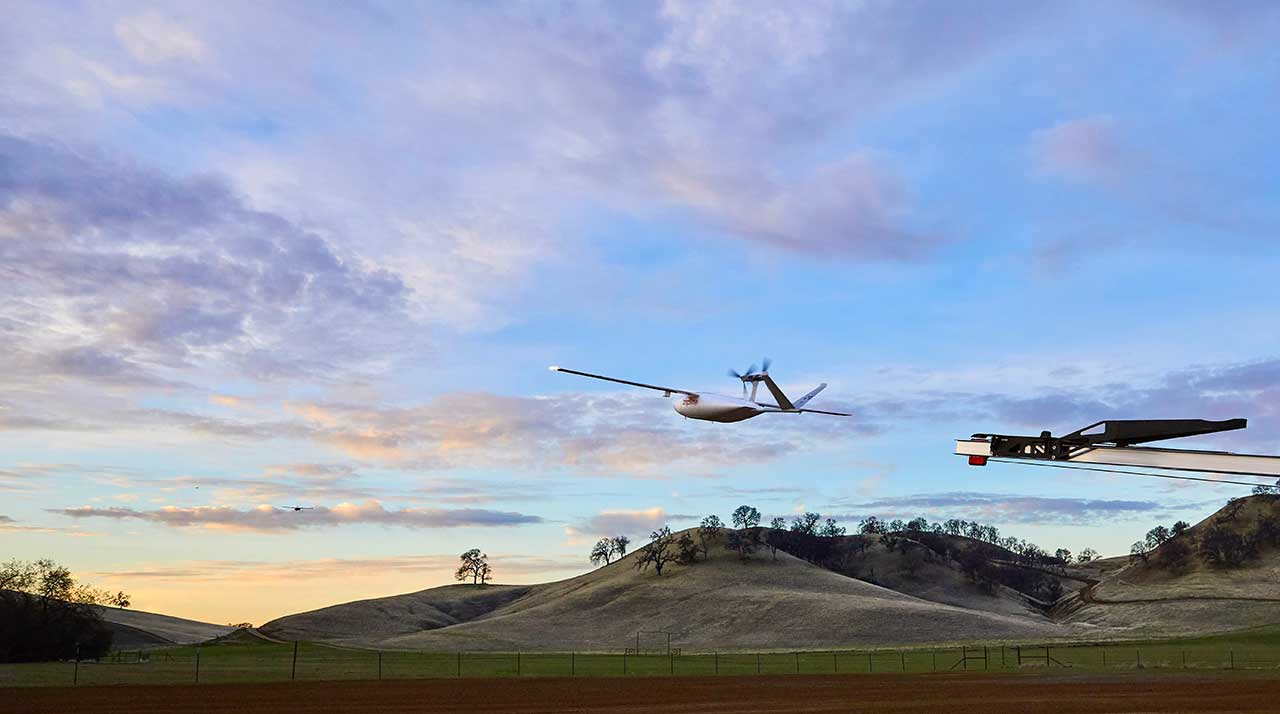By: Bronwyn Morgan, AG Training & Education Ambassador
The Federal Aviation Administration (FAA) will soon introduce Part 108, a proposed new rule to support the advancement of drone operations by formally enabling Beyond Visual Line of Sight (BVLOS) operations. This regulatory shift will bring widespread change to the U.S. drone ecosystem by making it possible for operators to routinely fly extended missions without needing individual waivers for each flight. With this expanded operational freedom comes increased responsibility. Training will form the cornerstone of that responsibility, to ensure that operators and organizations are well-prepared to navigate the complexities of extended drone operations in shared airspace. Are you ready?
The Regulatory Shift: From Part 107 to Part 108
Since 2016, in the U.S., Part 107 has served as the primary framework for small Unmanned Aircraft Systems (UAS) operations. It requires drones to remain within the pilot’s unaided visual line of sight. While effective for foundational operations, this restriction has limited high-value applications, including infrastructure inspection, agricultural monitoring, and corridor surveillance.
Recognizing these limitations, several years ago, the FAA formed the BVLOS Aviation Rulemaking Committee (ARC). After extensive collaboration with industry stakeholders, the ARC proposed Part 108 as a new rule designed to establish scalable and repeatable BVLOS operations. The ARC recommended the FAA mirror conventional aviation practices in this rule. This would offer a standardized framework that removes the need for one-off waivers and enables routine BVLOS flights across approved operational profiles.
Based on the ARC report, FAA briefings and industry assumptions, the belief is that under Part 108, in terms of airspace safety, detect-and-avoid (DAA) systems will play a critical role. The new rule is also expected to shift responsibility from individuals to organizations. Companies will likely be required to implement formal Safety Management Systems (SMS) and oversee compliance, operational control, and training of all personnel involved in BVLOS operations.
In June 2025, Executive Orders (EO) directed an acceleration in this regulatory trajectory by prompting the FAA to expedite its rulemaking process. Industry anticipates a Notice of Proposed Rulemaking (NPRM) to publish soon, ultimately to be followed by a finalized rule in alignment with national drone integration goals.
And the industry is ready for these changes. Several leaders emphasized the transformative potential of BVLOS. Dr. Jamey Jacob, Executive Director at the Oklahoma Aerospace Institute, emphasized the broader reach of BVLOS. “Regular BVLOS operations will support a wide range of commercial and public safety flight activities,” he said. Jordan Beyer of Skyfish echoed these sentiments: “Since Part 107 restricts you from delivering goods within two miles, BVLOS will become the standard operating procedure.” For his part, David Benowitz, Vice President at BRINC Drones, noted, “Beyond visual line of sight flights will become more efficient because of this development, which we find most exciting,” he said.

BVLOS Training: The Foundation for Safe Extended Operations
Part 108 will introduce regulatory changes as well as new expectations around technical competence and operational culture. Drone operators and flight teams will be responsible for missions where they cannot visually observe the aircraft—relying instead on a combination of automation, data systems, and coordinated team roles.
Comprehensive Training Requirements
These operational demands require more than just basic Part 107 certificate-level knowledge. They necessitate comprehensive training programs that encompass real-world complexity, technical systems management, and risk-based decision-making. Operators must understand how to integrate into shared airspace, interpret DAA system alerts, respond to unexpected changes mid-flight, and work within structured mission parameters.
Extensive Proficiencies Needed
Daily proficiency will extend to areas like Remote ID compliance, UAS Traffic Management (UTM) integration, and emergency protocols. Just as importantly, organizations must foster an environment in which all team members, from remote pilots to maintenance crews, align under a unified safety and operations framework.
The Shift to Team-Based BVLOS Missions
BVLOS operations will also shift the dynamic from individual piloting to team-based missions. Roles such as Remote Pilot-in-Command (RPIC), visual observers, flight operations coordinators, and technicians must work in tandem. Success will depend on coordinated communication, clear delegation, and consistent procedures across the entire flight operation lifecycle.
What Comprehensive BVLOS Training Should Include
The next generation of BVLOS training will go far beyond the fundamentals taught under Part 107.Training must begin with an in-depth understanding of the regulatory environment. Operators will need to grasp the structural differences between Part 107 and Part 108, comprehend right-of-way rules, and know how to manage compliance with Remote ID protocols and UTM systems. Foundational knowledge in airspace classification, NOTAM interpretation, and preflight authorization will be essential.
Mastering the Technology
From a technical standpoint, operators must master detect-and-avoid systems, interpret telemetry data, manage redundant communication links, and monitor onboard aircraft systems in real time. As drone autonomy increases, pilot responsibilities will shift from direct manual control to real-time systems oversight and decision-making based on sensor inputs.
Risk and Crew Resource Management
Training should also cover risk management strategies and emergency response procedures. Crew members must be prepared to evaluate risk pre-mission, respond to mid-flight anomalies, and successfully execute return-to-home or contingency landings when required. Curriculum must reflect real-world complications such as signal loss, environmental interference, and technical failures.
Scenario-Based and Team Training
Scenario-based training will prove essential to support these requirements. Operators will increasingly work in high-stakes, real-world environments, from conducting corridor inspections and assessing emergency zones to monitoring expansive farmland. Training must include realistic simulations, supervised outdoor exercises, and field-based equipment handling under varying environmental conditions. Advancement within these programs should be tied to demonstrated proficiency, not just logged flight hours.
Team training also will play a central role. Unlike solo Part 107 flights, BVLOS missions demand seamless collaboration among crew members. Training should emphasize communication protocols, reporting workflows, and coordinated mission execution to ensure everyone involved can act decisively under pressure.
These learning objectives should be grounded in mission-specific scenarios, including utility infrastructure inspections, public safety deployments, precision agriculture flights, and long-range delivery missions. Programs that reflect real-world operations will equip teams with not just competence—but confidence.

Sector-Wide Impact of Training
The introduction of Part 108 will ripple across every drone-reliant sector in the U.S. economy. In each of these areas, success will hinge on having trained, certified teams ready to take on long-range, data-intensive operations.
In utilities and energy, BVLOS-capable crews will routinely inspect power lines and pipelines over vast distances, eliminating the need for manned aircraft and reducing risks to personnel. In agriculture, trained operators will manage long-range multispectral surveys, supporting smarter land use and crop optimization. Public safety agencies will gain critical situational awareness during wildfires, floods, and search-and-rescue missions.
But without BVLOS-trained personnel, these benefits cannot be realized. And in logistics, drone delivery services will only succeed if operators understand how to manage long-haul flights, coordinate with local airspace rules, and ensure real-time monitoring and accountability.
Preparing for the New BVLOS Norm
Although the final rule has not yet been issued, proactive organizations should begin preparing today. This preparation starts by staying informed—tracking ARC guidance and FAA announcements. Organizations should evaluate their existing capabilities, assess personnel readiness, and determine gaps in operational oversight and technical training.
If no training program currently exists, now is the time to develop one that can evolve with regulatory changes. Investment in simulation tools, structured coursework, and field-based experience will accelerate internal capacity building. Collaborating with FAA test ranges and accredited education programs can also provide early access to approved BVLOS environments.
Most importantly, organizations must cultivate a mindset of continuous learning. Professionals should not view BVLOS as just a one-time certification—they should view it as an operational commitment that demands ongoing development, system updates, and cultural discipline.
The Future of BVLOS Belongs to the Prepared
FAA Part 108 will bring about fundamental change in how drones will operate in our national airspace. It will open doors to new commercial opportunities, public safety applications, and operational efficiencies that—for many—have been out of reach. But regulation alone won’t get us there. Success will depend on the quality, consistency, and foresight of training programs that equip operators with the skills and judgment required to fly safely and effectively beyond line of sight. The future of BVLOS operations will belong to those who don’t just watch the change—but prepare for it, lead it, and fly it.
By: Bronwyn Morgan, AG Training & Education Ambassador

